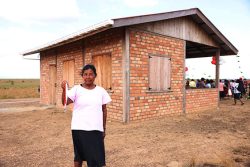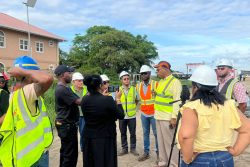Dear Editor,
I would like to congratulate Ms. lsabelle de Caires and the Moray House Trust for recently hosting a very informative panel discussion on “Shifting Power: Guyana’s Energy Mix” (video available on YouTube). Presenters included Dr. Simone Mangal-Joly who gave an over-view, Mr. Alfred Bhulai (focusing on solar/wind), former Minister David Patterson, MP (focusing on the gas-to-shore project) and Maurice Veecock (focusing on Amaila Falls/hydropower). The broad questions included: What will it cost? Who will benefit? What experiences are we drawing from? How long will it last? What is the wider context?
Dr. Mangal-Joly focused on what is the best energy mix for Guyana, what factors must be considered, and who should be involved in deciding and why? She said all stakeholders are not all being involved. Mr. Bhulai’s presentation concluded that comparing costs of energy provided by GPL, and the proposed costs of Amaila Falls Hydro, Offshore gas, and solar power, that solar is overwhelmingly the cheapest alternative. Participants posed some very perceptive questions to the panelists including: Can Patterson say why his Government chose the Mahaica site as a better place for the gas-to-shore project? What accounted for the difference in cost of gas to energy project proposed by the past and present Government? The audience sought agreement on whether solar should be the way to go and whether there are alternative sites for a hydropower station in Guyana? It seems to me a dam closer to the major areas of consumption would make more sense.
A picture showed a “dry” Amalia Falls where the water had stopped flowing, will this not affect the viability of the hydro project? The Production Sharing Agreement 2016 and Environmental Impact Assessment 2017 concur that associated gas should be re-injected, that is why Liza-1 has 3 gas and 6 water injection wells. Where will gas for the pipeline be obtained? Other questions asked were ExxonMobil placing 12-inch gas pipes 200 km laid across mud banks moving east to west at 1000-1300 metres per year and which would not be anchored to fixed foundations. Exxon does not seem to have considered that moving mud will break this pipe. The panelists were asked to weigh in on projected rainfall for the next five, 10, 15 and 20 years in Guyana and how these projections may impact on the viability of investments in hydropower? Also projected availability of sufficient sunshine – will there be sufficient solar power generation for daytime usage and storage for night-time usage? Other alternative energy sources include waste and garbage incineration and whether the Ali government is considering using same (as an alternative to landfills) as a source of energy? Finally, the panel was asked when the national energy strategy will be updated by the Guyana Energy Agency. The current version expired in 2020.
One participant said, “The Oil and Gas Governance Network (OGGN) would like to commend Moray House for hosting this forum. It is important to consult with folks who have ideas for our energy mix. There is nothing to lose and the nation gains. Much learning in this webinar.”
Sincerely,
Dr Jerry Jailall






